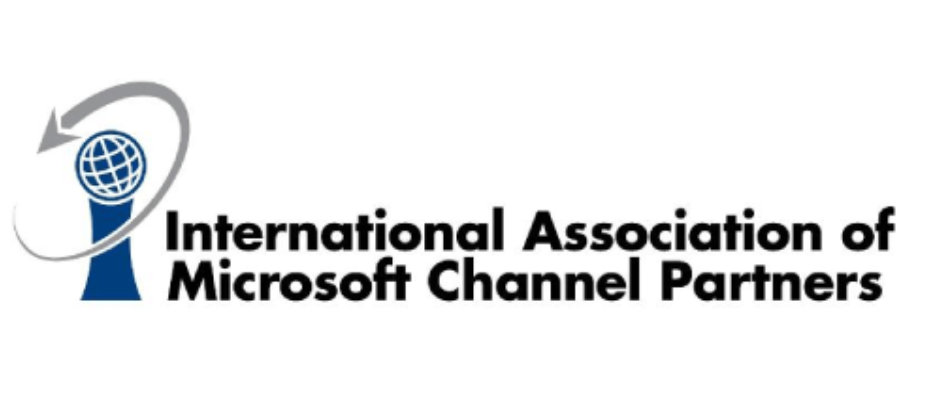Capture the true value of digital technology
We are Microsoft partners and excel in cloud operations, digital transformation and engineering services. At Csharptek, we believe in technological progress – that strides in digital technology, business intelligence and science can lead to better business outcomes, save costs and better human lives. We are at the forefront of innovation and help clients explore the evolving world of cloud and digital technology. We adopt an agile approach to technology, have the business intelligence, technological know-how and next-gen expertise to deliver unprecedented solutions to improve service performances and ensure customer delight.
Contact UsContact Info
- 199/A, Mandaliya Nagar, Bariatu, Ranchi
- +91-9334646668
- info@csharptek.com
- Week Days: 09.00 to 18.00 Saturday and Sunday: Closed
Transforming Healthcare with Cloud Computing
Evolution Benefits and Future Trends
- Manjika Tantia

Let's delve into some raw data. The global healthcare cloud computing market reached a noteworthy $39.4 billion in revenue in 2022 and is projected to soar to $89.4 billion by 2027, exhibiting a remarkable Compound Annual Growth Rate (CAGR) of 17.8% during the period from 2022 to 2027. This growth is particularly striking, showcasing the increasing significance of cloud computing in the healthcare sector.
The surge in cloud adoption within healthcare was primarily driven by the widespread adoption of telehealth, ePrescribing, Electronic Health Records (EHR), and similar solutions, largely accelerated by the challenges posed by the COVID-19 pandemic. Presently, cloud services have become integral to the entire healthcare industry, playing a role as vital as that of doctors and nurses.
Undeniably, cloud computing technology has evolved into a critical support system for various telehealth applications, enhancing data processing capabilities, ensuring automated scalability, and more. The healthcare sector's reliance on cloud services has expanded significantly, with factors such as cost reduction and optimized workload for staff members driving the adoption.
In practical terms, cloud systems enable hospitals to transition their operations and data to cloud-based servers, facilitating streamlined analysis of clinical notes and ultimately resulting in improved patient care. The integration of cloud computing has proven to be a transformative force, aligning healthcare institutions with the demands of the digital age.
Exploring the Role of Cloud Computing in Healthcare
Delving into the realm of cloud computing and its profound impact on all stakeholders within the patient care process necessitates a retrospective examination of how cloud technology has seamlessly woven itself into the fabric of the healthcare sector. Moreover, establishing a foundational understanding of the fundamental concepts that underpin the term "cloud computing in healthcare" would prove beneficial.
Let's embark on a journey to unravel the evolution and significance of cloud technology in transforming healthcare delivery.
Defining Cloud Computing in Healthcare
Cloud computing in healthcare encompasses the utilization of remote servers hosted on the Internet to store, manage, and process data and applications. This transformative technology has garnered significant attention in the healthcare sector owing to its potential to amplify efficiency, accessibility, and collaboration while concurrently upholding stringent data security and compliance with regulatory standards.
Key Concepts of Cloud Computing in Healthcare:
1. Remote Server Utilization: Cloud computing involves leveraging servers located on the Internet, enabling healthcare entities to store, manage, and process data and applications remotely.
2. Efficient Data Storage and Management: Cloud technology facilitates streamlined data storage and management, contributing to enhanced accessibility and mobility for healthcare professionals through robust interoperability of patient data.
3. Security and Compliance: Cloud computing ensures heightened security and compliance levels, with advanced technologies like Artificial Intelligence (AI) and Machine Learning (ML) playing a pivotal role in the storage, processing, and management of healthcare data.
In essence, cloud computing in healthcare stands as a transformative force, offering a dynamic and secure approach to handling healthcare data while fostering innovation and collaboration within the industry.
Evolution of Cloud Technology in Healthcare
1. Early Adoption and Virtualization (Early 2000s): In the early 2000s, progressive healthcare organizations embraced virtualization technologies, marking the initial steps toward server consolidation and resource optimization. This era witnessed the adoption of virtualized servers to host electronic medical records (EMRs), reducing infrastructure costs and laying the foundation for efficient data management.
2. Integration of Cloud Storage for Health Data (Mid-2000s): The mid-2000s saw a surge in healthcare data, driving the need for scalable storage solutions. Cloud storage emerged as a viable option, offering secure and flexible alternatives to traditional on-premises data centres. Healthcare providers turned to platforms like Amazon S3 and Microsoft Azure Blob Storage for secure storage and management of large medical datasets, including high-resolution images and diagnostic reports.
3. Advancements in Security Protocols (Late 2000s to Early 2010s): Addressing security concerns became paramount in the late 2000s and early 2010s, leading to significant advancements in security protocols such as encryption and multi-factor authentication. Healthcare cloud providers, including Google Cloud Healthcare API, implemented advanced encryption standards and security measures, instilling confidence in securely migrating critical data to the cloud.
4. Emergence of Healthcare-Specific Cloud Platforms (2010s): The 2010s witnessed the rise of specialized cloud platforms tailored to healthcare needs. These platforms offered integrated solutions to address data management, interoperability, and compliance challenges unique to the industry. Healthcare cloud platforms like gained prominence, facilitating secure data sharing, interoperability, and care coordination while ensuring compliance with healthcare regulations.
5. Integration of Artificial Intelligence and Machine Learning (2010s - Present): The current phase in healthcare cloud technology involves the convergence of cloud computing with Artificial Intelligence (AI) and Machine Learning (ML). Cloud-based AI services, exemplified by platforms like IBM Watson Health, empower healthcare providers with advanced analytics and decision-support tools. From the 2010s to the present, these platforms have been pivotal in analysing complex medical data, aiding diagnostics, and personalizing treatment plans, ushering in new possibilities for improving patient outcomes and advancing medical research.
Benefits of Cloud Computing in Healthcare
1. Enhanced Accessibility and Mobility: Cloud computing has transformed the accessibility and mobility of healthcare services, overcoming geographical limitations. It empowers healthcare professionals to deliver patient care beyond traditional boundaries. Cloud-based solutions offer secure data access from anywhere with an internet connection, facilitating timely decision-making and collaboration. For instance, a rural clinic connected to a cloud-based Electronic Medical Records (EMR) system allows physicians in remote locations to seamlessly access and update patient records. This ensures the availability of the latest information, enhancing the speed of diagnosis and treatment, especially in emergency situations.
2. Improved Efficiency and Collaboration: Cloud technology fosters improved efficiency in healthcare operations by streamlining workflows and promoting collaboration among medical professionals. Shared access to centralized databases and collaborative platforms allows healthcare teams to work cohesively, leading to quicker and more informed decision-making. For example, cloud-based collaboration tools enable real-time communication and data sharing among healthcare professionals, enhancing overall operational efficiency.
3. Scalable Infrastructure for Growing Data: The scalability of cloud infrastructure is a significant advantage in managing the exponential growth of healthcare data. Cloud platforms offer the flexibility to scale resources up or down based on the volume of data, ensuring efficient storage and processing. As healthcare data continues to expand, cloud scalability enables organizations to adapt and accommodate growing data demands seamlessly.
4. Enhanced Data Security and Compliance: Cloud computing in healthcare prioritizes data security and compliance with industry regulations. Cloud service providers implement robust security measures, including encryption, access controls, and regular audits, to safeguard sensitive patient information. Compliance with healthcare standards, such as the Health Insurance Portability and Accountability Act (HIPAA), is seamlessly integrated into cloud solutions, ensuring that healthcare providers meet regulatory requirements.
5. Cost Savings and Resource Optimization: Cloud computing offers cost-effective solutions for healthcare organizations by eliminating the need for extensive physical infrastructure and maintenance costs. Cloud-based models operate on a pay-as-you-go basis, allowing organizations to optimize resources and only pay for the services they use. This cost-efficient approach enables healthcare providers to redirect funds towards improving patient care, research, and innovation.
6. Advanced Analytics and Decision Support: Cloud-based analytics and Machine Learning tools empower healthcare professionals with advanced insights and decision support. Analysing large datasets in the cloud facilitates predictive analytics, personalized treatment plans, and the identification of trends that can enhance patient outcomes. Cloud-driven analytics contribute to evidence-based medicine and enable healthcare providers to stay at the forefront of medical advancements.
In summary, the benefits of cloud computing in healthcare extend beyond accessibility, encompassing efficiency, scalability, security, cost savings, and advanced analytics. Embracing cloud technology positions healthcare organizations to deliver higher quality care, enhance patient experiences, and stay agile in the ever-evolving healthcare landscape
Reduced Costs and Resource Optimization
Key Advantages:
1. Cost-Effectiveness: Cloud computing in healthcare offers a cost-effective alternative by eliminating the need for extensive on-premises infrastructure. Healthcare organizations can significantly reduce capital expenses related to hardware acquisition, maintenance, and upgrades. The pay-as-you-go model allows for flexible cost optimization, ensuring that organizations only pay for the resources and services they consume.
2. Optimized Capital Expenditure: Adopting cloud solutions enables healthcare companies to optimize capital expenditure. Instead of making substantial upfront investments in on-site servers and infrastructure, organizations can leverage cloud services on a subscription basis. This strategic shift from capital-intensive to operational expenses contributes to overall cost reduction and financial efficiency.
3. Scalability and Flexibility: Cloud platforms provide scalability to accommodate the evolving needs of healthcare organizations. As data storage requirements grow, cloud services can seamlessly scale up to meet increased demand. This eliminates the need for predicting future infrastructure needs and allows organizations to adapt dynamically to changing circumstances, ensuring resource optimization.
4. Efficient Resource Utilization: Cloud computing promotes efficient resource utilization by offering on-demand access to computing power, storage, and other resources. Healthcare providers can scale resources up or down based on demand, preventing over-provisioning, and optimizing resource allocation. This ensures that organizations have the right level of resources at the right time without unnecessary expenditures.
5. Maintenance and Upkeep Savings: Cloud solutions relieve healthcare organizations of the burden of maintaining and upgrading on-premises infrastructure. Cloud service providers handle routine maintenance, updates, and security protocols, reducing the workload on internal IT teams. This results in additional cost savings and allows healthcare professionals to focus on core responsibilities rather than managing infrastructure.
Case Scenario: Consider a hospital migrating its data storage to a cloud platform. Instead of investing in and maintaining costly on-site servers, the hospital can leverage cloud storage services. The pay-as-you-go model ensures that the hospital pays only for the actual storage space used, providing significant initial cost savings. Additionally, as the hospital's data requirements expand, the cloud solution seamlessly scales to accommodate growing needs, maintaining cost-effectiveness.
In conclusion, cloud computing not only reduces upfront costs but also optimizes ongoing expenses, enhances scalability, and promotes efficient resource allocation in the healthcare sector. Embracing cloud technology empowers organizations to redirect financial resources towards improving patient care, innovation, and strategic initiatives.
Improved data security and compliance with regulations
Cloud computing in healthcare addresses concerns regarding data security by implementing robust security measures and ensuring compliance with industry regulations. Cloud service providers invest heavily in security protocols, including encryption, access controls, and regular audits, surpassing the capabilities of many individual healthcare organizations. Cloud providers often adhere to strict healthcare regulations. For instance, Microsoft Azure's healthcare offerings include features like the Azure Security Canter for enhanced threat protection, demonstrating a commitment to data security and regulatory compliance
Scalability and Flexibility in Healthcare Operations
Key Benefits:
1. Adaptive Infrastructure: Cloud computing provides healthcare organizations with adaptive infrastructure, allowing them to scale IT resources up or down based on changing demands. This adaptability is particularly valuable for managing fluctuations in patient volumes, accommodating seasonal variations, and meeting evolving healthcare requirements.
2. Effortless Scaling During Peak Periods: During peak periods, such as flu seasons or public health emergencies, patient volumes may experience a sudden surge. Cloud-based solutions, like Electronic Health Records (EHR) systems, offer effortless scalability. These systems can dynamically allocate additional resources to handle increased data loads, ensuring uninterrupted access to patient information for healthcare professionals.
3. Resource Optimization: The ability to scale resources on-demand promotes resource optimization. Healthcare organizations can allocate computing power, storage, and other resources precisely when needed, preventing unnecessary over-provisioning during periods of lower demand. This resource efficiency contributes to cost savings and ensures that organizations maintain optimal operational performance.
4. Quick Adoption of New Technologies: Flexibility in scaling extends to the adoption of new technologies. Healthcare providers can quickly integrate innovative solutions and emerging technologies without the constraints of traditional infrastructure limitations. Cloud-based platforms facilitate seamless integration, allowing organizations to stay at the forefront of technological advancements.
5. Evolving to Meet Healthcare Demands: The healthcare sector is dynamic, with evolving regulatory requirements, technological advancements, and changing patient care models. Cloud computing enables healthcare organizations to adapt swiftly to these changes. Whether implementing new healthcare apps, incorporating telehealth services, or complying with updated data security standards, the flexibility of the cloud supports continuous evolution.
Case Scenario: Imagine a healthcare facility experiencing a sudden increase in patient volumes during a flu season. A cloud-based Electronic Health Records (EHR) system seamlessly scales its resources to manage the surge in data load. This ensures that healthcare professionals have real-time access to patient information, enabling timely and effective care delivery. The ability to quickly adjust resources based on demand illustrates the scalability and flexibility inherent in cloud-based healthcare operations.
In summary, the scalability and flexibility offered by cloud computing empower healthcare organizations to navigate dynamic conditions, optimize resources, and deliver efficient and responsive patient care. This adaptability positions cloud technology as a cornerstone for meeting the evolving demands of the healthcare industry.
Essential Components of Healthcare Cloud Computing
1. Electronic Medical Records (EMR) Migration: Electronic Medical Records (EMRs) form the cornerstone of digital healthcare, containing comprehensive patient data. Cloud computing facilitates the transition of EMRs from on-premises systems to cloud-based solutions, offering several advantages. Cloud-hosted EMRs ensure seamless data access, promote collaboration among healthcare providers, and enhance overall service efficiency. Mayo Clinic's adoption of cloud based EMR systems exemplifies this shift, enabling secure access to patient records from diverse locations and facilitating informed decision-making in patient care.
2. Picture Archiving and Communication Systems (PACS): Picture Archiving and Communication Systems (PACS) are pivotal for managing medical images like X-rays, CT scans, and MRIs. Cloud-based PACS solutions provide a centralized and scalable platform for storing, retrieving, and sharing medical images, thereby enhancing accessibility and collaboration among healthcare professionals. Healthcare facilities leveraging cloud based PACS solutions can efficiently manage and share medical images. This streamlines diagnostic processes and supports remote consultations, enabling specialists to review images from various locations.
Telemedicine and Remote Patient Monitoring
Cloud computing plays a pivotal role in the expansion of telemedicine and remote patient monitoring, revolutionizing the delivery of healthcare services. Cloud-based telemedicine platforms facilitate virtual consultations, while remote patient monitoring solutions utilize the cloud to collect and analyse patient data in real-time. This enables healthcare providers to monitor patients remotely, enhancing accessibility and reducing barriers to care, particularly in remote or underserved areas.
Platforms like Teladoc Health leverage cloud infrastructure to offer secure and scalable virtual medical services, enabling patients to connect with healthcare professionals remotely. This facilitates timely consultations, improves patient outcomes, and minimizes the need for in-person visits, thereby enhancing the overall efficiency of healthcare delivery.
Health Information Exchanges (HIEs) and Interoperability
Health Information Exchanges (HIEs) play a crucial role in promoting the seamless sharing of patient information among healthcare providers, facilitating care coordination, and reducing duplication of efforts. Cloud computing serves as a key enabler of interoperability by providing a common platform for different healthcare systems to exchange data securely.
Organizations like the Common Well Health Alliance leverage cloud-based technologies to enable health data exchange across various electronic health record (EHR) systems. This interoperability ensures that relevant patient information is accessible to authorized healthcare providers, irrespective of the EHR system in use. By enhancing the continuity of care and facilitating information exchange, cloud based HIEs improve patient outcomes and contribute to more efficient healthcare delivery.
Future Trends and Innovations in the Healthcare Industry
The future of cloud technology holds immense promise, particularly within the healthcare sector, where it is poised to drive significant advancements and transformative changes. Several emerging technologies are set to redefine the landscape of healthcare cloud computing, offering new opportunities for improved efficiency, security, and patient care.
Blockchain Technology: Blockchain technology is poised to revolutionize the security and integrity of health data, offering a decentralized and tamper-resistant system for medical record management. By integrating blockchain with cloud platforms, healthcare facilities can ensure transparent and secure sharing of medical records.
AI and ML in Healthcare: The integration of Artificial Intelligence (AI) and Machine Learning (ML) into healthcare cloud computing represents a transformative shift in diagnostics, treatment, and patient outcomes. AI algorithms hosted on cloud platforms can analyse vast datasets to identify patterns, predict diseases, and personalize treatment plans. Cloud-based ML models continuously learn and adapt, providing healthcare professionals with powerful decision support tools. Leading initiatives like Watson Health leverage cloud computing to process and analyse healthcare data, offering insights for personalized cancer treatment and medical image interpretation.
Edge Computing in Healthcare Delivery: The role of edge computing in healthcare is becoming increasingly prominent, particularly as the demand for real-time data processing grows. Edge computing involves processing data closer to the source, reducing latency, and enhancing the speed of analysis. In healthcare, this translates to quicker decision-making, especially in critical scenarios where timely information is crucial. Wearable devices equipped with edge processing capabilities, such as smartwatches with health monitoring features, exemplify the application of edge computing in emergency scenarios. These devices can analyse vital signs in real-time, providing immediate alerts to patients and healthcare providers alike.
As these emerging technologies continue to evolve and intersect with cloud computing, the future of healthcare holds immense potential for innovation, efficiency, and improved patient outcomes. By embracing these trends and harnessing the power of cloud technology, healthcare organizations can pave the way for a more connected, secure, and patient-centric future.
Regulatory Landscape and Compliance in Healthcare Cloud Computing
In the realm of healthcare cloud computing, navigating the regulatory landscape is paramount to ensure the secure handling and protection of patient data. Several key regulations and standards shape the compliance requirements for cloud service providers and healthcare organizations.
Health Insurance Portability and Accountability Act (HIPAA): HIPAA stands as a cornerstone of healthcare data protection, mandating strict guidelines for the handling of patient information. Cloud service providers must adhere to HIPAA regulations to ensure the secure storage and transmission of healthcare data. Leading providers like Microsoft Azure offer HIPAA-compliant cloud platforms tailored to the unique needs of healthcare organizations, providing robust security measures and regulatory compliance.
General Data Protection Regulation (GDPR): For healthcare entities operating globally, compliance with GDPR is essential, particularly when managing the personal data of European patients. GDPR imposes stringent requirements for data protection and privacy, necessitating cloud providers to implement specific features and safeguards. Platforms such as Amazon Web Services (AWS) offer GDPR-compliant solutions, enabling healthcare facilities to store and process data in alignment with European Union regulations.
HITECH Act: The HITECH Act complements HIPAA by addressing the technological aspects of healthcare data management and security. Cloud solutions that comply with HITECH regulations prioritize secure data exchange and interoperability. Providers like Google Cloud Healthcare API offer HITECH-compliant services, facilitating seamless data exchange and interoperability while upholding stringent security standards.
National Institute of Standards and Technology (NIST) Framework: The NIST framework provides comprehensive guidelines for managing and securing sensitive information, including healthcare data stored in the cloud. Cloud providers such as IBM Cloud adhere to NIST standards, offering healthcare organizations a robust framework for implementing cybersecurity measures and risk management strategies.
Challenges and Solutions:
Despite the myriad benefits of cloud computing in healthcare, challenges persist, including data security concerns, integration complexities, regulatory compliance, and resistance to change. Addressing these challenges requires a multifaceted approach, including the implementation of robust encryption mechanisms, stringent access controls, and ongoing cybersecurity awareness training for healthcare professionals. Additionally, leveraging cloud platforms that prioritize compliance with regulatory standards and offer advanced security features is essential to mitigating risks and ensuring the confidentiality and integrity of patient data.
- Share This Post :
- Tweet





Contact Us